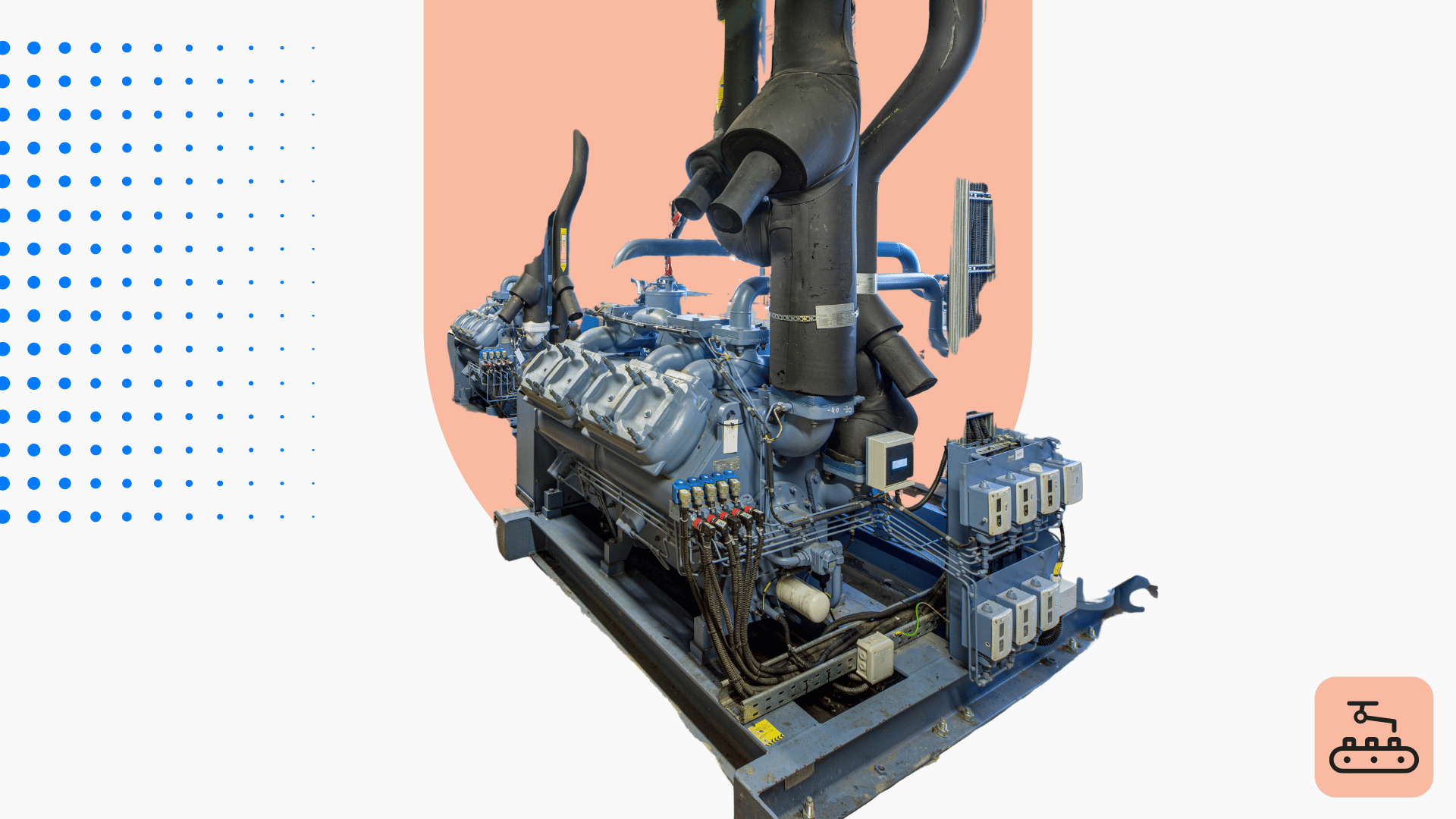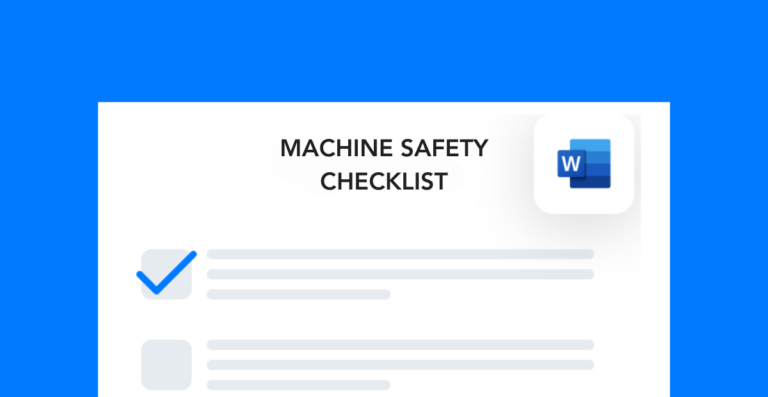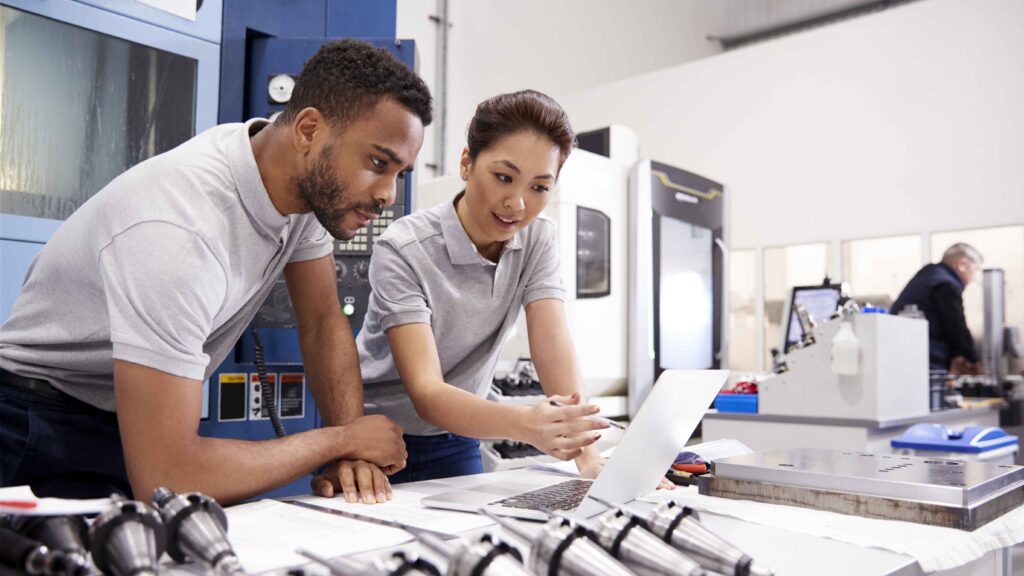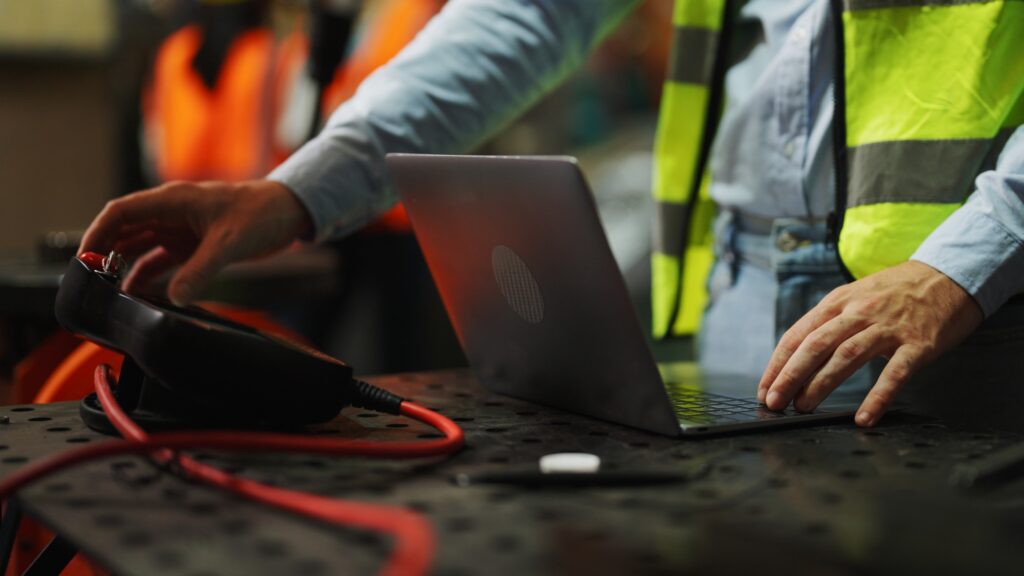Industrial equipment safety hazards pose major risks but there are so many ways to manage and control them. Identifying hazards within your processes, applying control measures, and training workers to protect themselves all contribute significantly to reducing incident rates.
Free checklist!
Download this free checklist to do a quick machine safety review. Customize the line items for a site-specific resource for your team.
Common industrial equipment safety hazards
Identifying equipment hazards marks the first step in managing them. In my experience, spotting these hazards is not difficult because many issues reveal themselves when you attempt to use the equipment.
Here are the main hazards to look out for:
- Electrical safety hazards (arc flashes, wires, circuits, etc.)
- Moving and rotating parts
- Pinch, crush, and pull hazards
- Confined space hazards (related to air monitoring equipment)
- Fall hazards due to unguarded platforms, misuse of PPE, etc.
- Noise exposure hazards
- Chemical exposure or environmental events
You should conduct a job hazard analysis for every task that involves industrial equipment. As a result, you gain a clear understanding of which hazards you must control and exactly where they occur.
Ways to manage equipment hazards
Once you compile your list of hazards, implement effective control measures. The equipment manual provides an excellent starting point because it contains all the essential information for safe use and proper maintenance. Moreover, when you build your strategies around the warnings and recommendations in the manual, you give yourself the best chance of success.
Here are some additional strategies for controlling industrial equipment safety hazards:
- Create equipment-specific training courses that teach workers how to safely inspect, use, and care for their tools.
- Conduct regular toolbox talks on pieces of equipment within your facility.
- Enforce a strict preventative maintenance schedule.
- Create a designated storage and repair area for broken or damaged equipment.
- Make task-specific PPE requirements and enforce them consistently.
- Post emergency shutdown procedures next to each piece of equipment.
- Implement a hazard reporting system for your workers to share safety concerns.
Always start with proactive safety measures like teaching employees how to report hazards. This will give you the best chance of being able to correct issues before they cause a near miss or recordable incident.
Eliminating equipment hazards
Don’t forget to ask yourself the most important question of all:
“Is this piece of equipment essential to the process or can we eliminate it altogether?”
Proactive safety is all about eliminating hazards wherever possible. So, if the equipment poses any danger and it’s not essential to the business, then what can you do to remove it from your processes? If you can shift your thinking in this way, you’ll have a much easier time managing and reducing industrial equipment safety hazards onsite.




